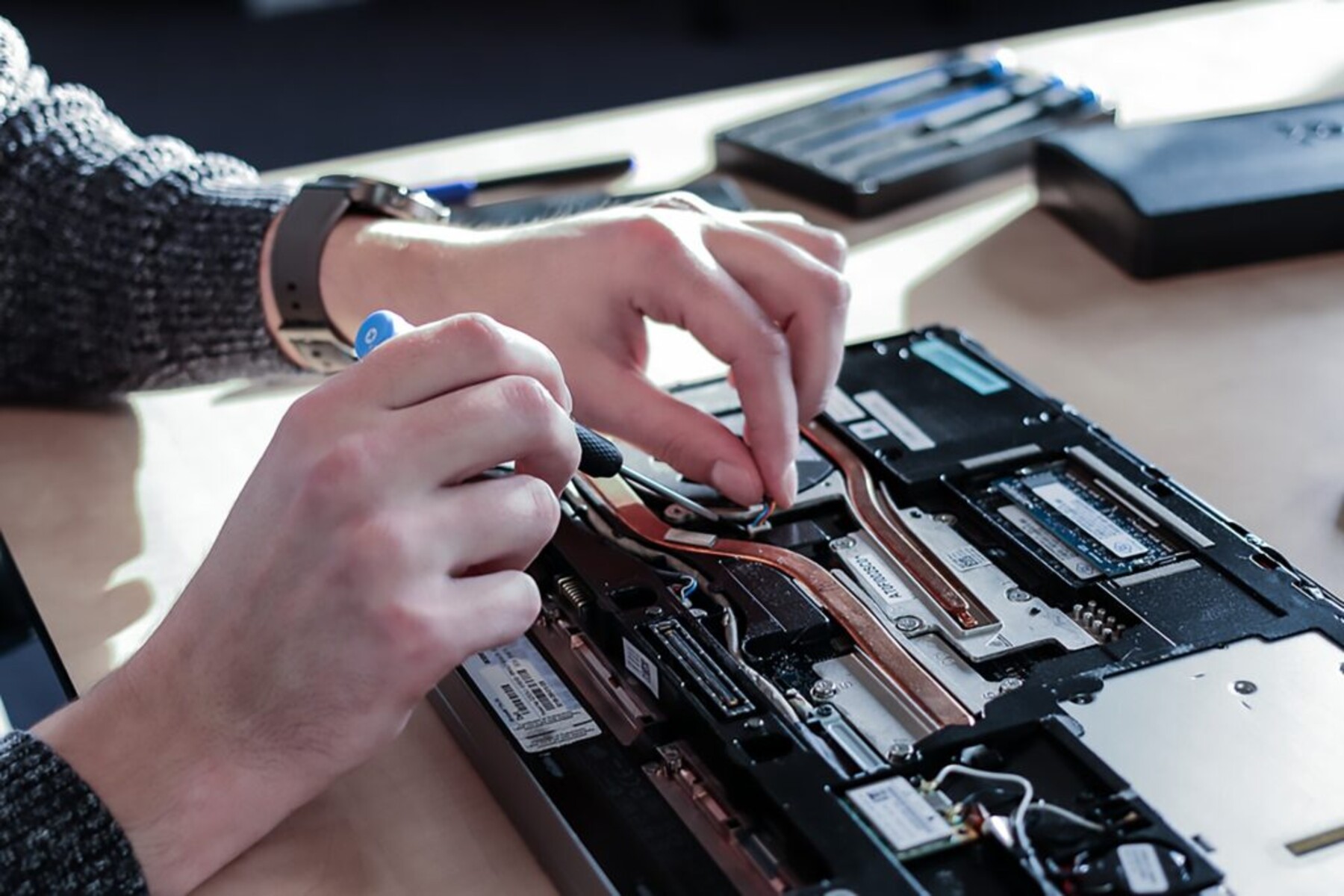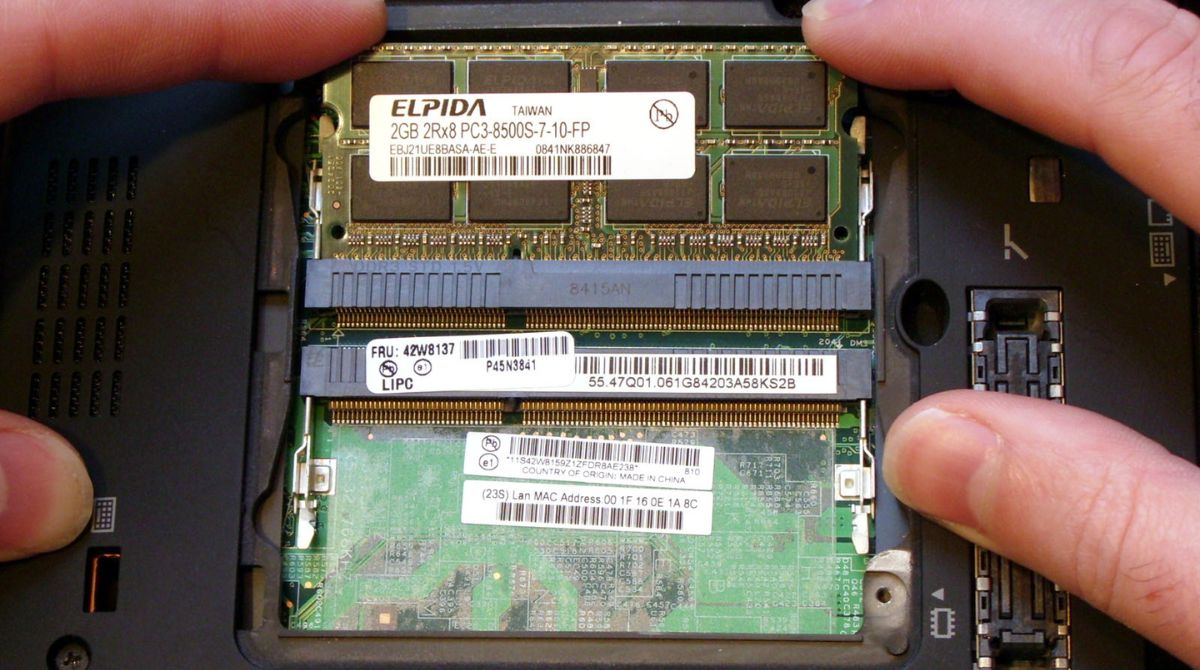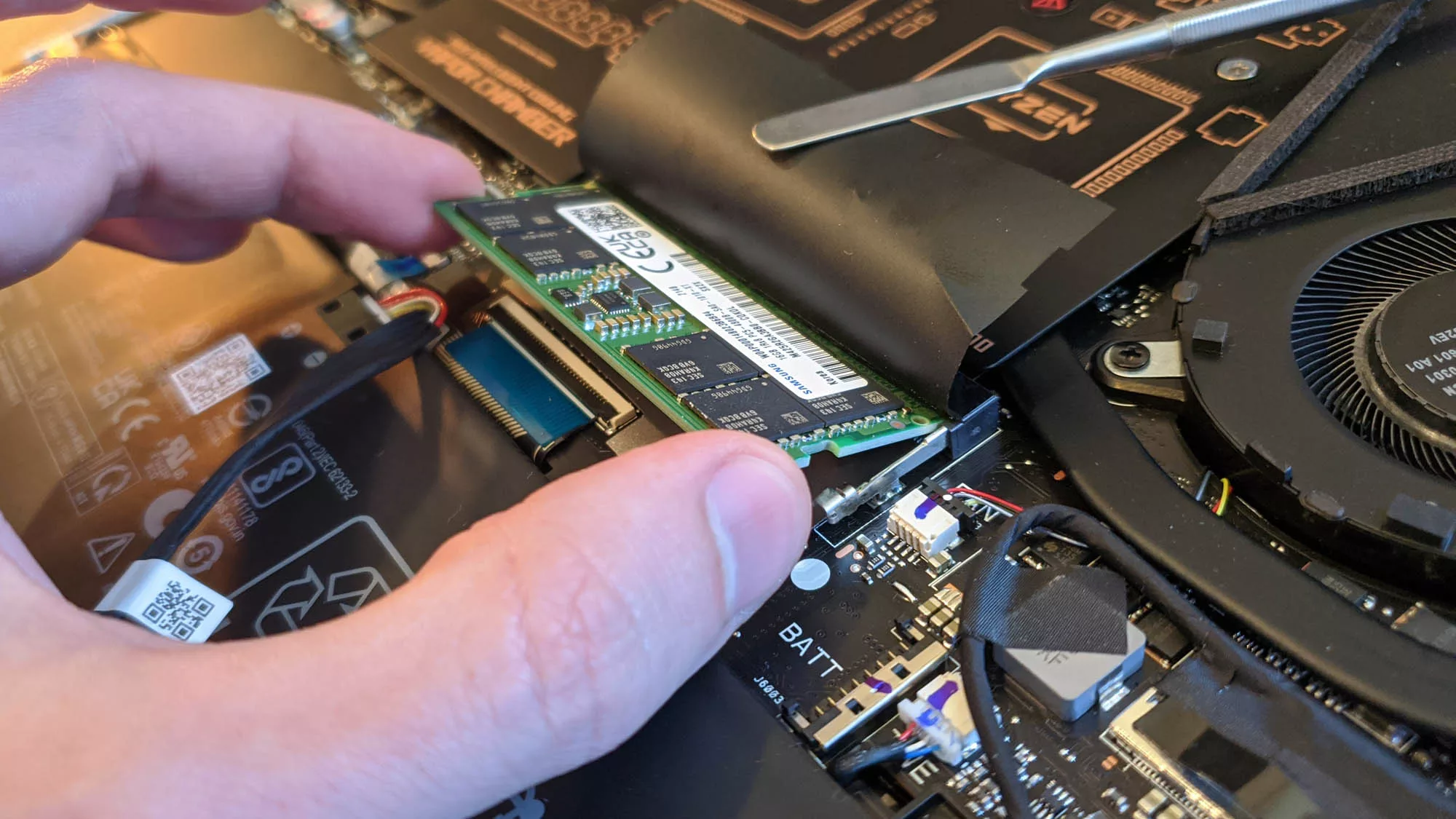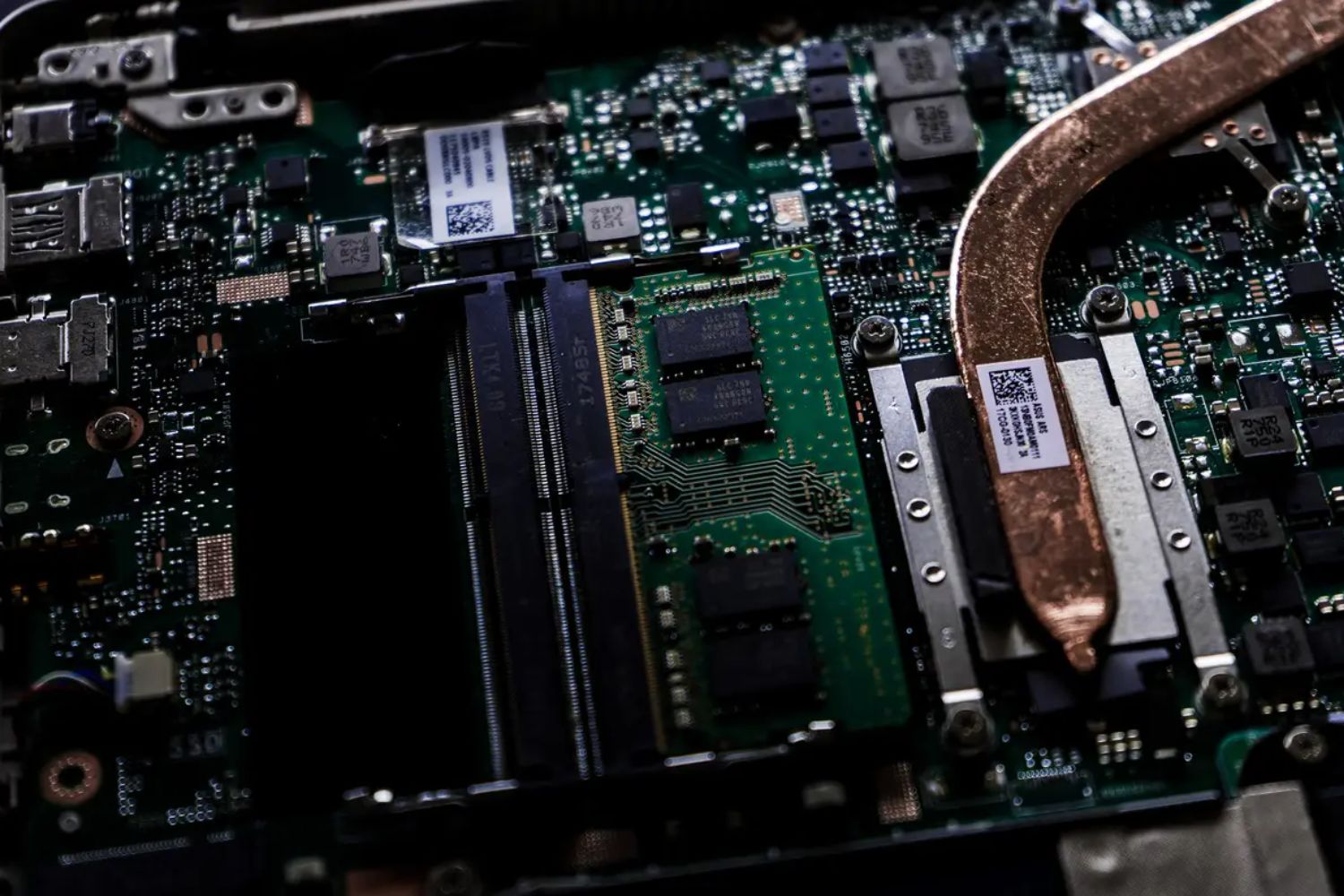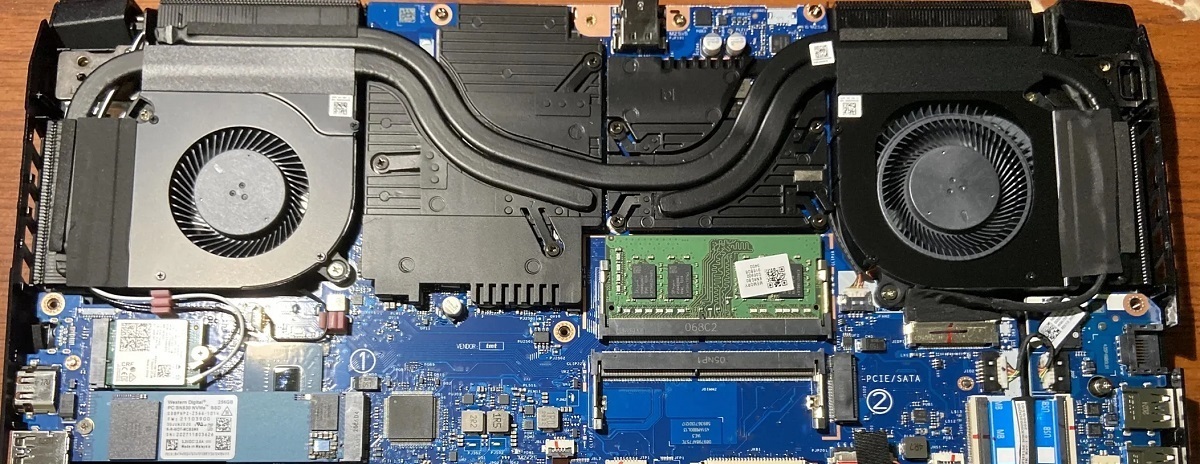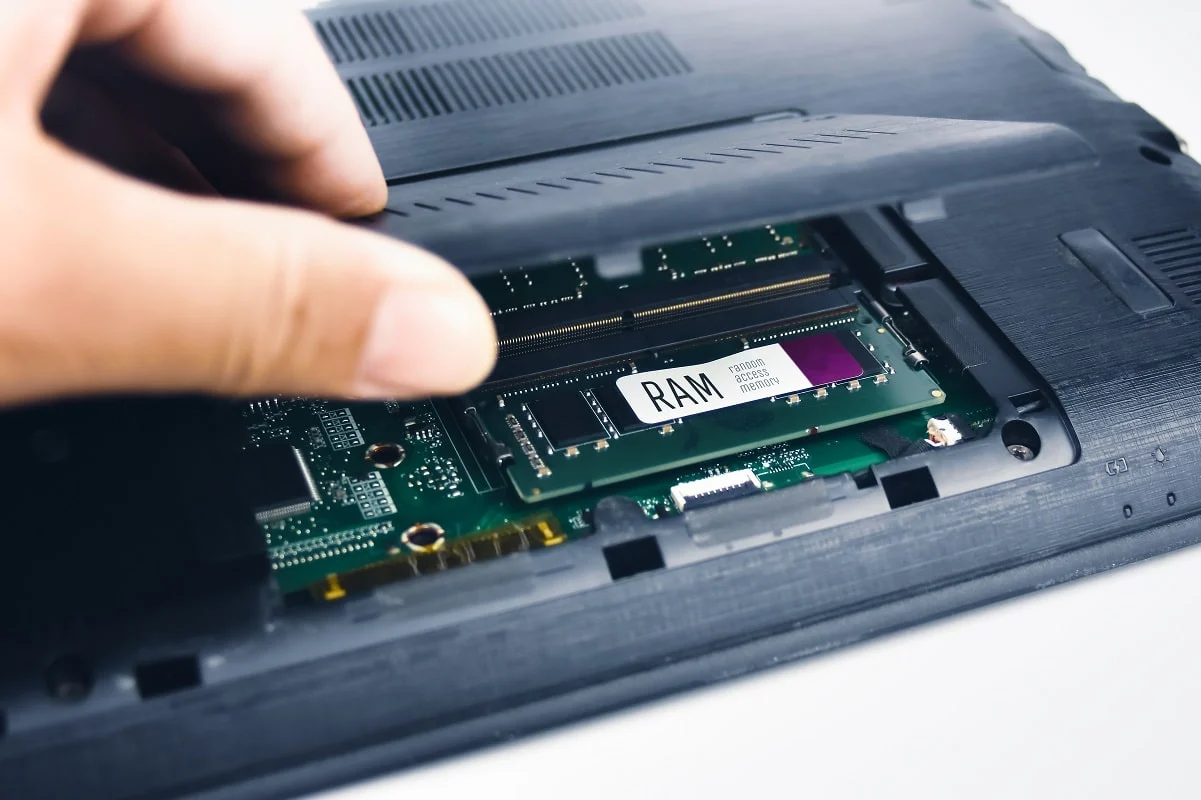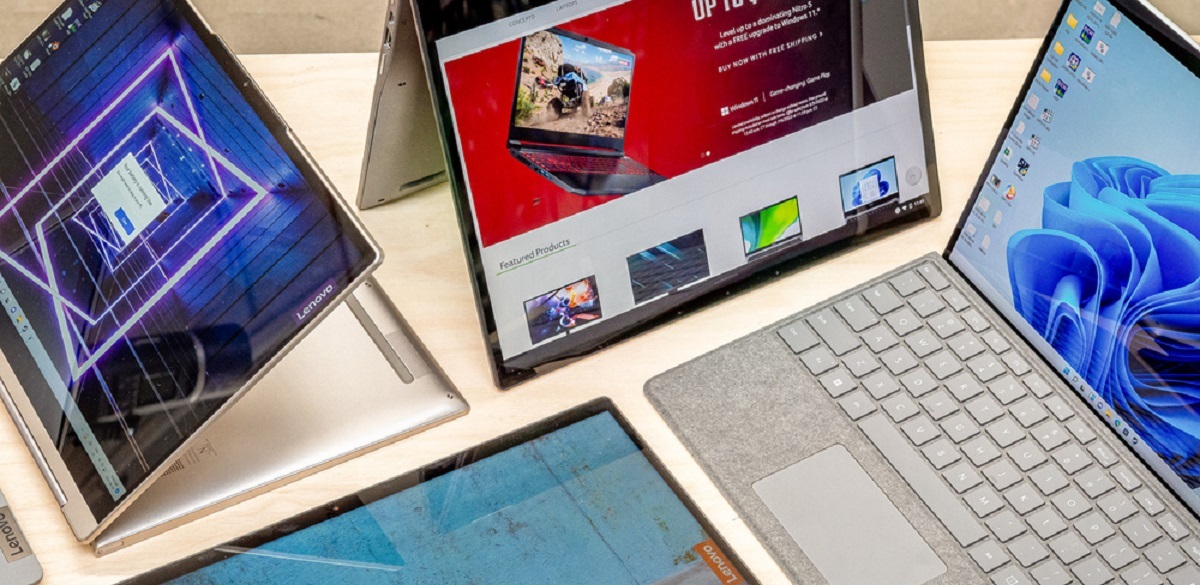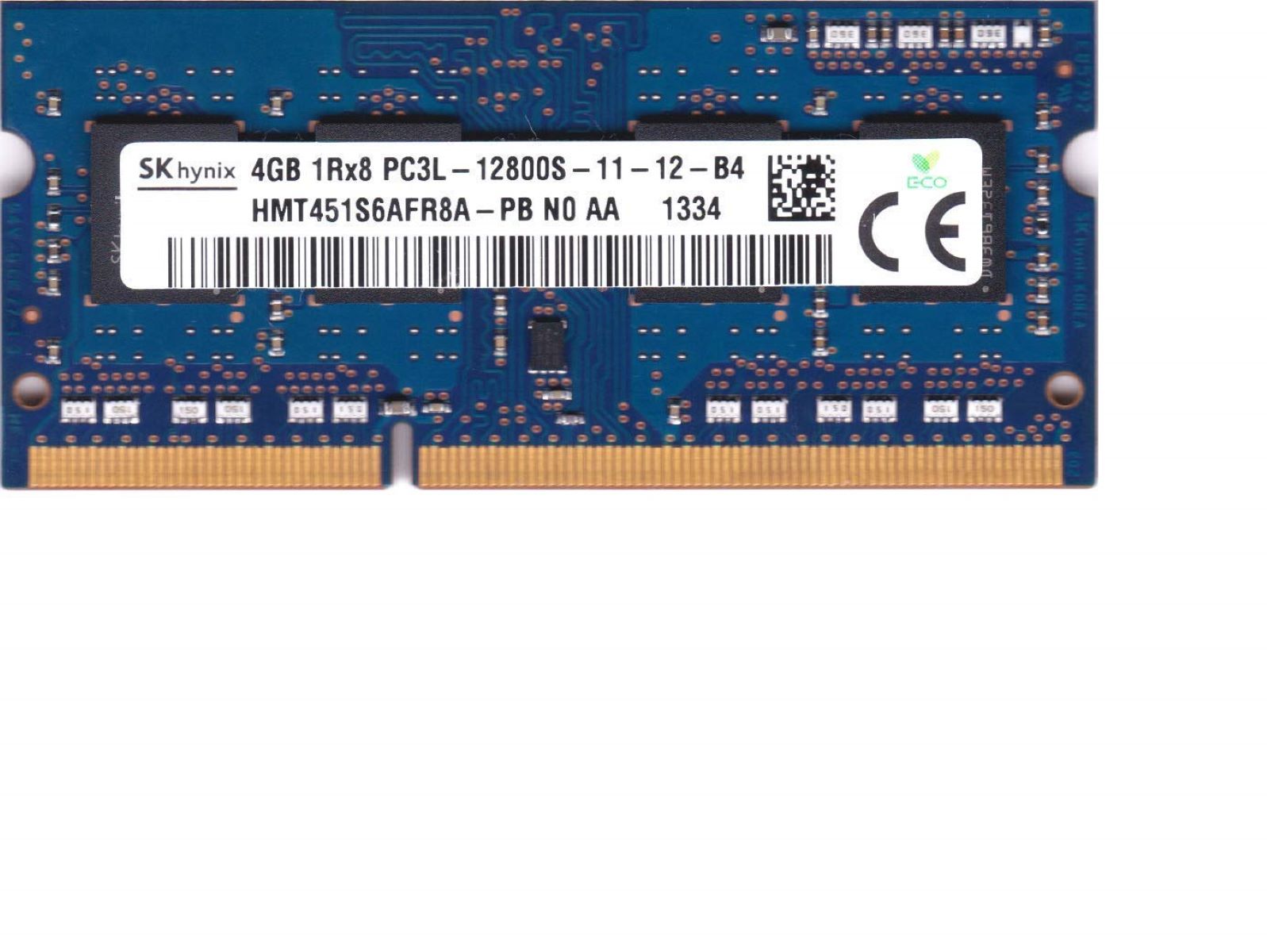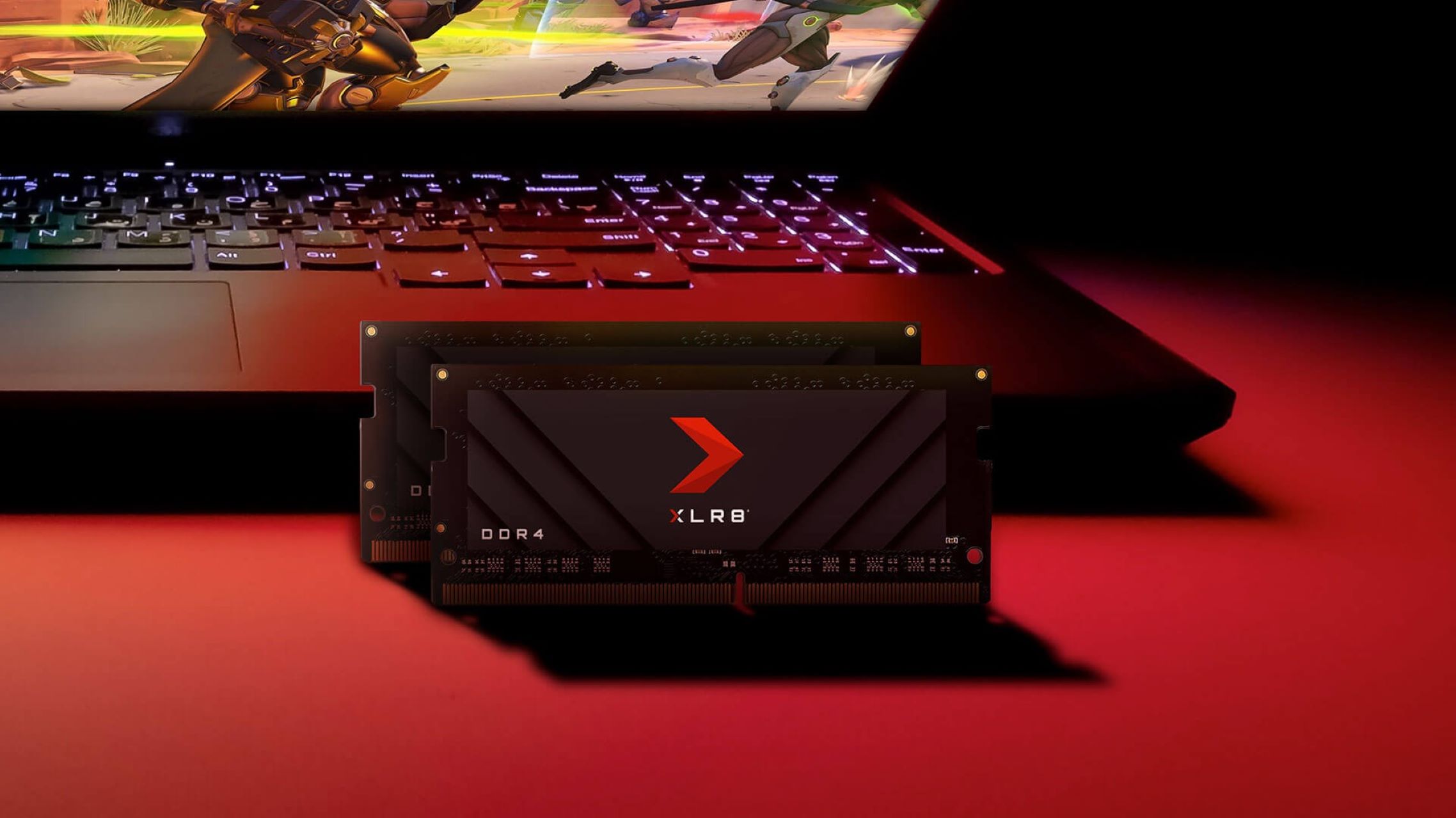Introduction
Welcome to the world of laptops, where technology and convenience converge! These portable devices have revolutionized the way we work, play, and stay connected. One crucial component that plays a significant role in a laptop’s performance is RAM, or Random Access Memory.
You may have come across the term “RAM” when shopping for laptops or browsing through tech forums, but what exactly does it mean? In this article, we will explore the intricacies of RAM for a laptop, why it is essential, the different types available, and how you can optimize its usage.
RAM is like a temporary workspace for your laptop’s processor. It stores and provides quick access to the data and instructions that the processor needs to carry out tasks. Think of it as a desk where you place the files and documents you’re currently working on. The more RAM your laptop has, the more tasks it can handle simultaneously, and the smoother its performance will be.
But why is RAM important for a laptop? The answer lies in the speed at which data can be accessed. Unlike the long-term storage provided by your hard drive or SSD, RAM offers fast, temporary storage that allows your laptop to exchange data with the processor quickly. This speed is crucial for multitasking, running resource-intensive applications, or handling large amounts of data.
Having sufficient RAM is essential, mainly because it directly impacts your laptop’s performance. If your laptop has inadequate RAM, it may struggle to handle multiple applications simultaneously, resulting in sluggish performance, freezing, or even crashing. On the other hand, having ample RAM can enhance your overall computing experience by ensuring smooth multitasking, faster program loading times, and improved responsiveness.
So, how much RAM does your laptop need? The answer depends on your usage requirements and budget. Modern laptops usually come with a minimum of 4GB of RAM, which is sufficient for everyday tasks like web browsing, word processing, and media consumption. However, if you frequently engage in demanding tasks like video editing, graphic design, or playing resource-intensive games, you may benefit from 8GB or even 16GB of RAM.
Now that we have established the importance of RAM for a laptop, let’s delve into the different types of RAM that you may come across when shopping for a laptop.
What is RAM?
RAM, which stands for Random Access Memory, is a vital component of a laptop’s overall performance. It is a temporary storage area that allows the computer to access and manipulate data quickly. Unlike the computer’s hard drive or solid-state drive (SSD), which provide long-term storage, RAM provides fast and temporary storage that has a direct impact on the laptop’s speed and responsiveness.
When you open a program or file on your laptop, it is loaded from the storage drive into the RAM. The processor then accesses and manipulates the data in RAM, allowing you to interact with the program or file quickly. Essentially, RAM acts as a bridge between the storage drive, where your files are stored, and the processor, the brain of your laptop.
One key characteristic of RAM is its volatility. Unlike the storage drives, RAM requires a continuous supply of power to retain the data stored in it. When you turn off your laptop or restart it, the data in RAM is lost, hence the term “random access”. This is why it is important to save your work frequently to the storage drive, as it provides permanent storage for your files.
Another important aspect of RAM is its capacity, measured in gigabytes (GB). The more RAM your laptop has, the more data it can store and access simultaneously. This is especially crucial when running multiple applications or performing resource-intensive tasks such as video editing or gaming. With more RAM, your laptop can handle these tasks more efficiently, resulting in smoother performance and faster load times.
It’s worth noting that RAM is different from the hard drive or SSD in terms of access speed. While RAM provides almost instant access to data, storage drives have a longer access time. This is because RAM uses integrated circuits to store and retrieve data, while storage drives rely on mechanical components such as spinning disks or flash memory cells.
In today’s fast-paced digital world, having sufficient RAM is crucial for a laptop to keep up with your workload. If your laptop has insufficient RAM, it may struggle to handle multiple applications or tasks at once, leading to slow performance, freezing, or crashes. On the other hand, having more RAM than you need may not necessarily provide a significant performance boost unless you engage in demanding activities that require ample memory.
Now that you have a better understanding of what RAM is and its importance in a laptop, let’s explore how much RAM your laptop needs to perform optimally.
Why is RAM important for a laptop?
RAM, or Random Access Memory, plays a crucial role in a laptop’s performance and overall user experience. It directly affects how efficiently your laptop can handle tasks and run applications. Here are some key reasons why RAM is important for a laptop:
1. Multitasking: RAM enables your laptop to handle multiple tasks simultaneously. When you have several applications or browser tabs open, each one requires a certain amount of RAM to function smoothly. Insufficient RAM can cause your laptop to slow down, freeze, or even crash when you attempt to multitask.
2. Faster Program Loading Times: Having ample RAM allows your laptop to store more program data in memory, reducing the need for frequent access to the storage drive. As a result, programs and applications load faster, allowing you to start working without unnecessary delays.
3. Improved Responsiveness: With sufficient RAM, your laptop can respond faster to your commands. When you click on a file, open a program, or switch between applications, RAM ensures a smooth and responsive user experience.
4. Handling Resource-Intensive Applications and Files: RAM is especially crucial when working with large files, such as high-resolution images or video editing projects. These resource-intensive tasks require more RAM to store and manipulate data in real-time without experiencing performance bottlenecks.
5. Gaming Performance: If you’re an avid gamer, having sufficient RAM is essential. Games often require a significant amount of memory to run smoothly. Insufficient RAM can lead to choppy frame rates, lag, and longer load times, ultimately impacting your gaming experience.
6. Future Proofing: Investing in a laptop with ample RAM ensures that it can meet your needs both now and in the future. As software and applications become more demanding, having more RAM provides better longevity and allows your laptop to keep up with technological advancements.
Having too little RAM can severely limit your laptop’s performance, resulting in frustrating slowdowns and decreased productivity. It is important to consider your specific needs, such as the types of tasks you frequently perform and the applications you use, when determining the amount of RAM you require.
While 4GB of RAM may be sufficient for basic tasks like web browsing and word processing, it is generally recommended to have at least 8GB of RAM for a smoother overall experience. For more demanding activities like video editing, graphic design, or gaming, 16GB or even 32GB of RAM may be more appropriate. Assessing your usage patterns and considering future needs will help you choose a laptop with the right amount of RAM for optimal performance.
Now that we understand the importance of RAM, let’s explore the different types of RAM that are available for laptops.
How much RAM does a laptop need?
The amount of RAM your laptop needs depends on various factors, including your usage requirements, the types of tasks you perform, and your budget. While there is no one-size-fits-all answer, here are some guidelines to help you determine how much RAM your laptop needs:
1. Everyday Tasks: If you primarily use your laptop for basic tasks like web browsing, email, word processing, and media consumption, 4GB of RAM should be sufficient. This amount of memory can handle these tasks comfortably, ensuring smooth performance and responsiveness.
2. Multitasking and Productivity: If you frequently multitask or work with several applications simultaneously, consider getting 8GB of RAM or more. This extra memory allows your laptop to handle multiple tasks more efficiently, reducing the chances of slowdowns or freezing when switching between programs.
3. Creative Work: If you work with resource-intensive applications like video editing software, graphic design tools, or 3D modeling applications, opt for 16GB or even 32GB of RAM. These applications require a significant amount of memory to process large files and render complex visual elements smoothly.
4. Gaming: Gaming enthusiasts should aim for a minimum of 8GB of RAM, with 16GB being the recommended sweet spot. Many modern games require ample memory to load large game assets, handle complex AI calculations, and provide smooth gameplay. Having sufficient RAM ensures a seamless gaming experience without lags or stutters.
5. Future Proofing: When considering the amount of RAM, it’s essential to think about your long-term needs. As software and applications continue to evolve and become more resource-intensive, it’s wise to future-proof your laptop with more RAM than you currently require. Investing in 16GB or even 32GB of RAM can provide your laptop with better longevity and ensure smooth performance as technology advances.
It’s important to note that the amount of RAM required may also depend on the operating system you are using. While 4GB may be sufficient for basic tasks on older operating systems, newer versions like Windows 10 or macOS typically recommend 8GB or more for optimal performance.
When purchasing a laptop, consider the upgradeability of RAM. Some laptops allow you to easily upgrade the RAM yourself, while others have the RAM soldered onto the motherboard, making it non-upgradable. If you anticipate needing more RAM in the future, it may be worth investing in a laptop with upgradeable memory.
Ultimately, the right amount of RAM for your laptop should strike a balance between meeting your current needs and preparing for future requirements. Assess your usage patterns, consider the types of tasks you perform, and choose a laptop with the appropriate amount of RAM to ensure optimal performance and a smooth user experience.
Now that you know how much RAM your laptop needs, let’s explore the different types of RAM available for laptops.
Different types of RAM for laptops
When it comes to RAM for laptops, there are several different types available. Each type has its own specifications and compatibility requirements. Understanding the different types of RAM can help you make an informed decision when upgrading or purchasing a laptop. Here are some of the most common types of RAM used in laptops:
1. DDR4: DDR4, or Double Data Rate 4, is currently the most common and widely used type of RAM in modern laptops. It offers faster data transfer speeds and higher memory density compared to its predecessor, DDR3. DDR4 RAM modules are available in various capacities, ranging from 4GB to 32GB, providing options for different usage requirements.
2. DDR3: DDR3, or Double Data Rate 3, was the dominant RAM type before DDR4 gained popularity. While DDR3 RAM is slower and less power-efficient compared to DDR4, it is still capable of providing sufficient performance for everyday tasks. DDR3 RAM modules come in a range of capacities, from 2GB to 16GB.
3. LPDDR4: LPDDR4, or Low Power DDR4, is a variant of DDR4 RAM that is specifically designed for mobile devices, including laptops. LPDDR4 RAM provides lower power consumption and improved battery life compared to regular DDR4 RAM. It is commonly found in thin and lightweight laptops or those with a focus on power efficiency.
4. DDR3L: DDR3L is a low-voltage variant of DDR3 RAM. It operates at a lower voltage than standard DDR3, making it more power-efficient and suitable for laptops. DDR3L RAM is backward compatible with DDR3 slots, allowing it to be used in laptops that support DDR3 RAM without any issues.
5. DDR2 and DDR: These are older RAM types that are rarely found in modern laptops. DDR2 and DDR RAM modules have lower data transfer speeds and capacities compared to DDR3 and DDR4. If you have an older laptop, it may be equipped with DDR2 or DDR RAM. However, it is generally recommended to upgrade to a laptop that supports DDR3 or DDR4 RAM for better performance and compatibility.
When considering which type of RAM to choose, it’s crucial to ensure compatibility with your laptop’s motherboard. Manufacturers usually specify the supported RAM type and maximum capacity in the laptop’s specifications. It’s essential to match the RAM type and speed requirements to ensure optimal performance and stability.
It’s worth noting that DDR4 RAM is backward compatible with DDR3 slots. However, they are not physically compatible due to different pin layouts. Therefore, it is important to double-check the specifications of your laptop’s motherboard and select RAM modules accordingly.
Additionally, some laptops may have limitations on the maximum amount of RAM they can support. It’s important to check the maximum RAM capacity and plan accordingly if you anticipate needing more memory in the future.
Now that you’re familiar with the different types of RAM, let’s explore how you can upgrade or expand the RAM in your laptop.
How to Upgrade or Expand the RAM in a Laptop
Upgrading or expanding the RAM in your laptop can significantly improve its performance, especially if you find yourself running out of memory or experiencing slowdowns when running multiple applications. Here are the steps to upgrade or expand the RAM in a laptop:
1. Identify Compatibility: Before upgrading the RAM, determine the maximum amount of memory your laptop can support and the type of RAM it requires. Check the laptop’s user manual or manufacturer’s website for this information. Additionally, consider the number of RAM slots available in your laptop, as this will determine the maximum capacity you can achieve.
2. Purchase the Appropriate RAM: Once you know the required RAM type and maximum capacity, purchase the RAM modules accordingly. Ensure that you buy RAM modules from reputable manufacturers that offer good quality and compatibility. Match the specifications, such as capacity, speed, and voltage, with your laptop’s requirements.
3. Prepare Your Laptop: Before installing the new RAM, shut down your laptop and disconnect it from the power source. Remove the battery if it is removable. Use an anti-static wristband or regularly touch a grounded metal object to discharge any static electricity to prevent damage to the components.
4. Access the RAM Slots: The location of the RAM slots varies depending on the laptop model. In most cases, the RAM slots can be accessed by removing a panel on the back of the laptop or by removing the keyboard. Consult the laptop’s manual or search online for specific instructions on accessing the RAM slots for your laptop model.
5. Install the New RAM: Carefully insert the new RAM module into an empty RAM slot at a slight angle, aligning the notch on the module with the corresponding groove in the slot. Press down firmly until the module clicks into place. Take care not to force or damage the module during installation.
6. Secure the RAM: Once the RAM module is properly seated, gently push down on its edges until it locks into place. Some laptops use clips or screws to secure the RAM module, so ensure that it is properly fastened according to your laptop’s design.
7. Test the RAM: After installing the new RAM module, reassemble your laptop and reconnect the power source. Power on the laptop and check the system properties to ensure that the new RAM is detected and functioning correctly. You can also run diagnostic software to verify the RAM’s stability and performance.
It’s important to note that while upgrading or expanding the RAM in a laptop can improve performance, it may not always be possible or necessary for all models. Some laptops have soldered RAM, meaning the memory modules are permanently attached to the motherboard and cannot be upgraded. In such cases, it is advisable to consider the RAM capacity and requirements when purchasing a new laptop.
By following these steps and ensuring compatibility, you can successfully upgrade or expand the RAM in your laptop, providing it with the additional memory needed to handle more tasks and improve overall performance.
Now that you know how to upgrade the RAM in a laptop, let’s explore some tips for optimizing RAM usage to maximize its benefits.
Tips for Optimizing RAM Usage in a Laptop
Optimizing RAM usage in your laptop can help ensure efficient memory management and enhance overall performance. Here are some useful tips to maximize RAM utilization:
1. Close Unnecessary Programs: Running too many programs simultaneously consumes valuable RAM. Close any unnecessary applications or background processes to free up memory for the tasks you need to focus on.
2. Manage Startup Programs: Some programs automatically launch when your laptop starts up, consuming valuable RAM. Disable or remove unnecessary startup programs to reduce memory usage during startup and improve system performance.
3. Use Lightweight Applications: Resource-intensive applications can quickly consume a significant amount of RAM. Whenever possible, opt for lightweight alternatives that place fewer demands on system resources. This can help conserve memory for other essential tasks.
4. Clear Temporary Files: Temporary files and cache can accumulate over time and consume precious RAM space. Regularly clear temporary files, browser cache, and unnecessary system files to free up memory and improve system responsiveness.
5. Adjust Virtual Memory Settings: Virtual memory uses a portion of the hard drive as an extension of RAM. Adjusting virtual memory settings can help allocate more or less space on the hard drive, providing additional memory when needed. However, be cautious when modifying these settings and follow recommended guidelines to avoid system instability.
6. Keep System and Drivers Updated: Outdated system software and drivers can cause memory leaks and other performance issues. Regularly update your operating system and drivers to ensure compatibility and take advantage of performance enhancements and bug fixes.
7. Install RAM Optimization Software: Consider using RAM optimization software designed to manage memory usage efficiently. These tools can help identify and close memory-hogging processes, optimize system settings, and automatically manage memory allocation for improved performance.
8. Upgrade to SSD: Solid-State Drives (SSD) provide faster data access compared to traditional hard drives. Upgrading to an SSD can significantly reduce the time it takes to load programs and files, reducing reliance on RAM for storage and improving overall system performance.
9. Minimize Browser Tabs and Extensions: Web browsers, especially with multiple tabs and extensions, can consume a substantial amount of RAM. Keep the number of open tabs to a minimum and remove unnecessary browser extensions to conserve memory.
10. Restart Your Laptop: Restarting your laptop periodically can help clear memory leaks and release any occupied RAM. This simple step can refresh system resources and improve overall performance.
By implementing these tips, you can optimize RAM usage in your laptop and ensure that the available memory is utilized efficiently. This will result in smoother multitasking, faster program loading times, and an overall improved computing experience.
Now that you have a better understanding of optimizing RAM usage, let’s wrap up this article with a recap of the key points discussed.
Conclusion
RAM, or Random Access Memory, is a critical component in a laptop that directly impacts its performance and responsiveness. It acts as a temporary workspace for the processor, allowing quick access to data and instructions. Adequate RAM is essential for multitasking, faster program loading times, and handling resource-intensive tasks.
When determining how much RAM your laptop needs, consider your usage requirements and budget. For basic tasks, 4GB of RAM may suffice, while more demanding activities like video editing or gaming may require 8GB or more. It’s important to strike a balance between meeting current needs and future-proofing your laptop.
There are various types of RAM available for laptops, including DDR4, DDR3, LPDDR4, DDR3L, DDR2, and DDR. Ensure compatibility with your laptop’s motherboard when choosing RAM modules.
If you need to upgrade or expand the RAM in your laptop, follow the steps of identifying compatibility, purchasing the appropriate RAM, accessing the RAM slots, installing the new RAM, and testing its functionality.
To optimize RAM usage, close unnecessary programs, manage startup programs, use lightweight applications, clear temporary files, adjust virtual memory settings, keep your system and drivers updated, consider installing RAM optimization software, upgrade to an SSD, minimize browser tabs and extensions, and restart your laptop regularly.
By following these guidelines, you can maximize the benefits of RAM, ensuring smooth multitasking, faster program execution, and an overall improved user experience on your laptop.
We hope this article has provided you with valuable insights into RAM for laptops and equipped you with the knowledge to make informed decisions when it comes to upgrading or purchasing a laptop. Remember, a well-equipped laptop can unlock new possibilities and enhance your productivity in various personal and professional endeavors.







